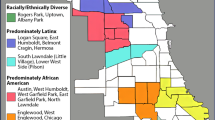Abstract
This paper is a case study of how Youth ALIVE!, a nonprofit public health organization, blended direct service and policy goals to reduce youth gun violence at a time when guns became the number one killer of children in California. Youth ALIVE! trained young people living in California communities with the highest rates of gun violence to become peer educators and leaders to reduce both the supply of, and demand for, guns. The youth presented health and criminal justice data in the context of their own experiences living in communities endangered by gun violence to help build public policy solutions, contributing to the subsequent drop in gun homicides. Youth ALIVE’s vibrant grassroots model provides a real-life tableau of research and direct services working together to yield realistic policy solutions to a lethal public health problem. The youths’ successes demonstrate how nonprofit direct service organizations are uniquely positioned to advocate for policy and regulatory changes that can be beneficial to both program participants and society. Direct service organizations’ daily exposure to real-life client needs provides valuable insights for developing viable policies—plus highly motivated advocates. When backed by scientific findings on the causes of the problem, this synergy of youth participant engagement in civil society can promote good policy and build healthy communities.
Similar content being viewed by others
Notes
Staff responsibilities also included: guiding participant meetings, setting up trainings, scheduling and attending all presentations; providing members with transportation, support and feedback; outreach to participants’ families to engage with the program, including attendance at public presentations and program celebrations; outreach to school staff to address behavior or academic issues for participants. Staff also provided information on services requested by the youth, such as counseling, child protection, tutoring, and various health issues. Youth ALIVE! raises the funding necessary for support of these programs.
Inspired by the local success of Oakland’s Gun Tracing Task Force, in 2004, the President of the California Senate partnered with Youth ALIVE! staff and convened a statewide California Gun Tracing Task Force, in order to overcome technological and training barriers to link local, state, and federal tracing systems. This state Task Force, composed of representatives of federal, state, and local law enforcement and gun violence prevention experts, recommended California Automated Firearm System reforms which were funded and fully implemented by the state of California in 2011.
References
Kimberlin SE. Advocacy by nonprofits: roles and practices of core advocacy organizations and direct service agencies. J Policy Prac. 2010; 9: 164–182.
Crutchfield LR, Grant HM. Creating high impact nonprofits. Stanf Soc Innov Rev. 2007; 10: 33–41.
Wallack L. The role of mass media in creating social capital: a new direction for public health. In: Smedley BD, Syme SL, eds. Promoting Health: Intervention Strategies from Social and Behavioral Research. Washington, DC: National Academy Press; 2000: 337–365.
Youth Leadership Institute. Engaging Youth in Policy Change [Brochure]. San Francisco: Youth Leadership Institute; 2009.
Christoffel K, Christoffel T. Handguns: risk versus benefits. Pediatrics. 1986; 77: 781–782.
Carter GL. Gun control in the United States: a reference handbook. Santa Barbara, CA: ABC-CLIO; 2006: 69.
Centers for Disease Control and Prevention. Health objectives for the nation: weapon-carrying among high school students -- United States 1990. Morbidity Mortality Wkly Rpt. 1991;40(40);681–684. http://www.cdc.gov/mmwr/preview/mmwrhtml/00015300.htm. October 11,1991. Updated August 5, 1998. Accessed February 20, 2012.
Law Center to Prevent Gun Violence. The California model: twenty years of putting safety first. Law Center to Prevent Gun Violence. http://www.smartgunlaws.org/the-california-model-twenty-years-of-putting-safety-first/. Published July 29, 2013. This analysis was initially conducted by Griffin Dix, PhD.
Henigan DA. Lethal Logic: Exploding the Myths that Paralyze American Gun Policy. Washington, DC: Potomac Books; 2009: 149.
Youth ALIVE!, Children’s safety network. Firearm facts information on gun violence and its prevention [Report]. Washington, DC: National Center for Education in Maternal and Child Health, U.S. Department of Health and Human Services; (undated).
Becker M, Calhoun D, with Teens on Target youth leaders. Teens on target violence prevention curriculum for Grades 6–12. Minneapolis: Educational Media Corporation;2000.
Kirkwood K. ANG Newspapers to Stop Handgun Ads. Oakland Tribune. July 13, 2000;L1-2.
Calhoun D, O’Sullivan M, Gonzales M. Taking action. Oakland, CA: Women Against Gun Violence, a project of Youth ALIVE!; 1995. 12.
National Funding Collaborative on Violence Prevention. Case study: East Bay Public Safety Corridor Partnership, Oakland, California [Report]. Washington: National Funding Collaborative on Violence Prevention; 2003: 3.
Herscher E. 15 East Bay Cities Fight Junk Guns. San Francisco Chronicle. July 9, 1996;1.
Calhoun D, Zahnd E, Craig A, Journel C. The supply and demand for guns to juveniles: Oakland’s gun tracing project. J Urban Health. 2005; 82: 552–559.
Youth ALIVE! Winter Newsletter.2006;1.
Rosenberg M. quoted in White JH. Violence: a public health epidemic. Health Progress. January-February 1994; 75(1): 18–21.
Marcial J. Reflections on Leadership Recognition - the California Peace Prize. Reflections. Woodland Hills, CA: The California Wellness Foundation; 2005: 7.
Acknowledgments
Support for the preparation of this article was provided by the Rockefeller Foundation Bellagio Fellows Residency Program. Points of view or opinions in this document are those of the author and do not necessarily represent the position or policies of the Rockefeller Foundation. The author would like to thank Richard Bunce, MA, Stanley Weisner, PhD, MSW, Elaine Zahnd, PhD, Naneen Karraker, MA and Griffin Dix, PhD. for their review of this article.
Author information
Authors and Affiliations
Corresponding author
Additional information
Deane Calhoun, MA is the founder and former Executive Director (retired) of Youth ALIVE!, Oakland, CA.
Rights and permissions
About this article
Cite this article
Calhoun, D. Decreasing the Supply of and Demand for Guns: Oakland’s Youth Advocacy Project. J Urban Health 91, 72–83 (2014). https://doi.org/10.1007/s11524-013-9835-6
Published:
Issue Date:
DOI: https://doi.org/10.1007/s11524-013-9835-6




